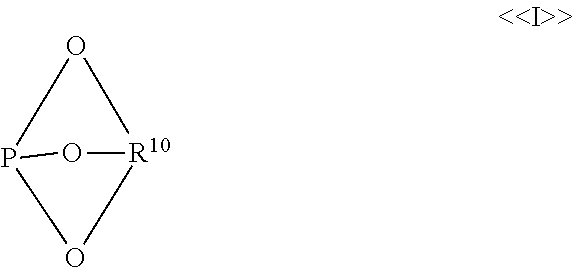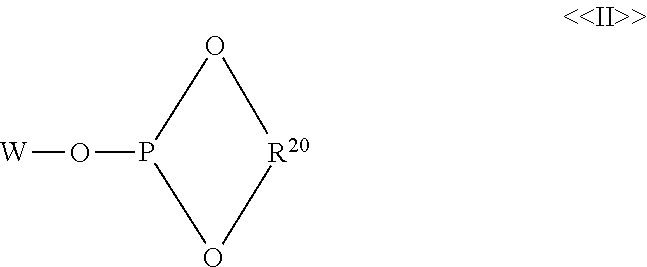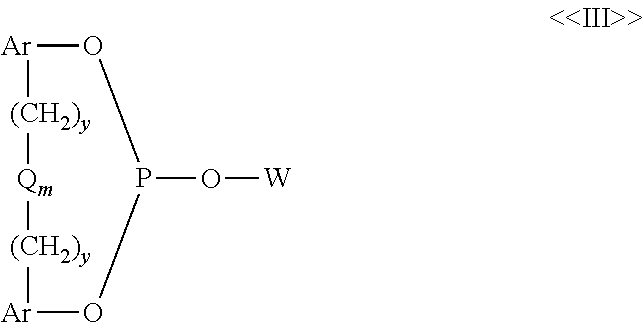Hydroformylation process
a technology of hydroformylation and hydrolysis process, which is applied in the preparation of carbonyl compounds, organic compounds/hydrides/coordination complexes, physical/chemical process catalysts, etc., can solve the problems of strict limits on the phosphorous content of plant effluent streams, increased ligand decomposition is not commercially acceptable, and the loss of catalytic activity, etc., to achieve the effect of negatively affecting the hydroformylation process and promoting the preferential
- Summary
- Abstract
- Description
- Claims
- Application Information
AI Technical Summary
Benefits of technology
Problems solved by technology
Method used
Image
Examples
example 2
Use of Sodium Maleate Buffer
[0099]The hydroformylation reaction is conducted as described in Comparative Experiment 1, except that the buffer treatment is 0.4M sodium maleate for the first 65 days and 0.2M sodium maleate for the last 78 days at pH 7. The results of Comparative Experiment 1 and Example 2 are shown in Table 1.
TABLE 1Comparison of sodium phosphate and sodium maleateComparativeExperiment 1Example 2Run length (days)112143Average HBPA capacity at pH = 6.5 change-340790out (ppm)Number of fresh buffer charges required106Cumulative Ligand A usage (g / L / day)0.0260.036Sodium detected in recycled catalyst solution(ppm by atomic absorption)Rhodium detected in aqueous buffer (ppm byatomic absorption)
[0100]Hydroxyl butyl phosphonic acid (HBPA) is an ultimate acidic by-product of Ligand A decomposition. The data indicate an increased capacity of the sodium maleate buffer for HBPA, thus requiring less frequent buffer replacement while buffering in the desired pH range. Comparable lig...
PUM
| Property | Measurement | Unit |
|---|---|---|
| pH | aaaaa | aaaaa |
| temperatures | aaaaa | aaaaa |
| temperatures | aaaaa | aaaaa |
Abstract
Description
Claims
Application Information
 Login to View More
Login to View More - R&D
- Intellectual Property
- Life Sciences
- Materials
- Tech Scout
- Unparalleled Data Quality
- Higher Quality Content
- 60% Fewer Hallucinations
Browse by: Latest US Patents, China's latest patents, Technical Efficacy Thesaurus, Application Domain, Technology Topic, Popular Technical Reports.
© 2025 PatSnap. All rights reserved.Legal|Privacy policy|Modern Slavery Act Transparency Statement|Sitemap|About US| Contact US: help@patsnap.com



